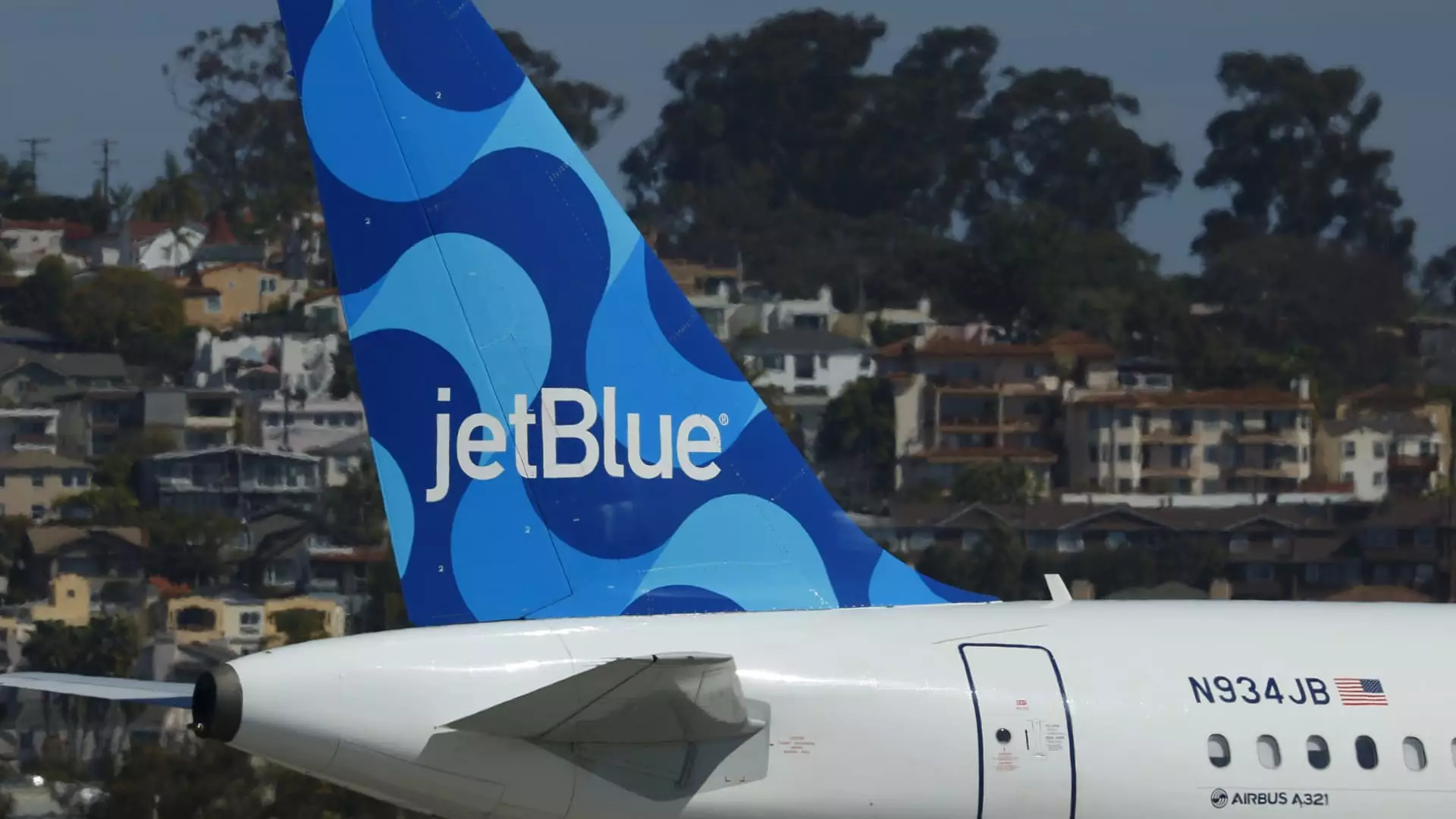The once-promising horizons of JetBlue Airways are shrouded in uncertainty, as CEO Joanna Geraghty recently informed staff about significant cost-cutting measures amid disappointing travel demand. The dawning realization that achieving break-even operating margins seems “unlikely” this year is a stark warning for the airline’s future. This is not merely a seasonal dip; it’s a grave signal that the airline industry is grappling with profound challenges that could redefine its future. JetBlue, like many other carriers, finds itself navigating through an ever-tightening battleground for survival, and this scenario raises crucial questions about operational resilience and strategic planning.
Chipping Away at the Edges of Viability
Geraghty’s candid acknowledgment that reliance on “borrowed cash” to sustain operations is becoming the norm is alarming. This level of financial dependency could lead to long-term ramifications that touch every facet of the airline, from its workforce to its customer service. In a time when many U.S. carriers are forced to trim capacity—especially in the latter half of the year—one can’t help but wonder, will JetBlue’s steps be enough to stabilize its plummeting revenue? The stark reality is that economic uncertainty looms large, complicating the forecasters’ job and diluting expectations of recovery. The once reliable prospects of domestic travel are proving to be a mirage, forcing the carrier to scramble for solutions.
Demand and Downgrades: What’s Next?
As JetBlue grapples with weaker-than-anticipated bookings and a fall in airfares—illustrated by a notable 7.3% drop in fares compared to last year—the alarms are sounding louder. This predicament illustrates a larger trend: air travel demand is far from the roaring comeback many had envisioned post-pandemic. JetBlue’s decision to pull its long-term financial forecasts is emblematic of the industry’s angst, reflecting a broader sense of pessimism that indicates executives are unsure about the trajectory of consumer behavior in an uncertain economy. This instability calls into question whether JetBlue can mount an effective recovery strategy or whether it must prepare for protracted challenges ahead.
Trying to Soar with One Wing Tied Behind Its Back
The challenges JetBlue faces are compounded by setbacks in terms of its previous ambitions, notably the canceled acquisition of Spirit Airlines and the failed alliance with American Airlines. Such refusals to consolidate market power only exacerbate the issue of market competitiveness. JetBlue’s plans to cut off-peak flights and unprofitable routes signify a desperate attempt at cost management, but it raises an even more salient concern—what about customer loyalty? When choices dwindle, so does the allegiance of customers, many of whom feel betrayed by declining options and service quality.
Rethinking Growth Prospects
JetBlue’s investment in premium-class seating presumably aims to woo higher-paying customers back to their cabins. While there is merit in catering to the affluent traveler, it risks alienating the core customer base that once characterized JetBlue as a budget-friendly option. A speculation arises: is this a short-sighted strategy? Are the lavish lounge developments and premium upgrades just a facade masking deeper systemic issues? Perhaps the focus should shift toward enhancing everyday customer experiences rather than catering solely to affluent fliers.
Leadership Actions: A Double-Edged Sword
Geraghty’s announcement regarding potential restructuring and leadership role consolidation may demonstrate a willingness to adapt, but this could also indicate a faltering confidence in the current team’s capabilities. While continuing to recruit front-line employees is crucial, one can’t ignore the worry that cutting leadership roles could stifle innovation and morale, vital components during turbulent times. The introduction of new partnerships, such as with United Airlines, may provide some respite; however, it feels like a temporary bandage on a severe wound.
In a landscape where unpredictability reigns, JetBlue must resist complacency and embrace a more balanced approach—one that acknowledges both the necessity and the risks inherent in its current strategies. As the airline industry continues to evolve, JetBlue can ill afford to ignore the underlying currents shaping consumer sentiment and market competition.

